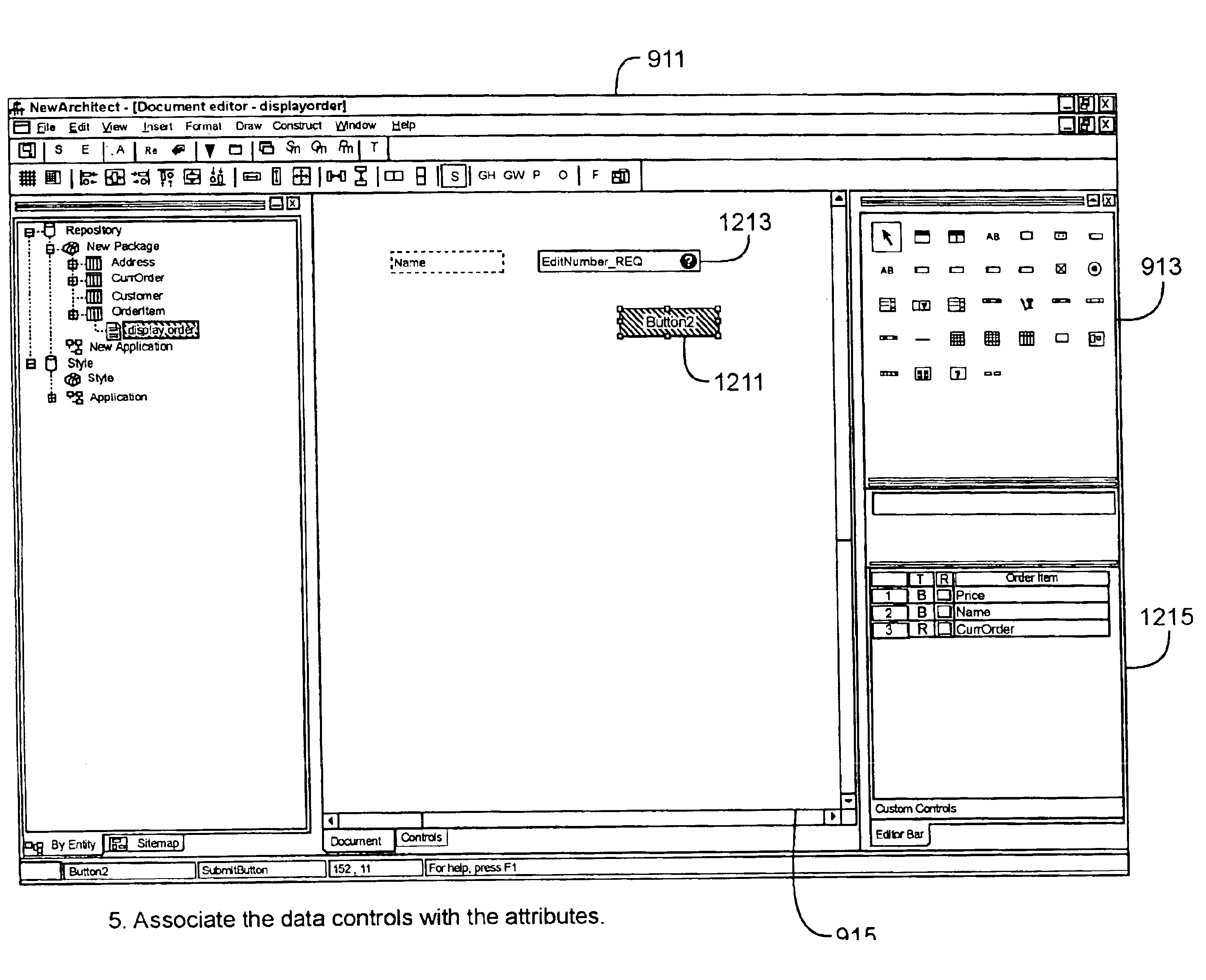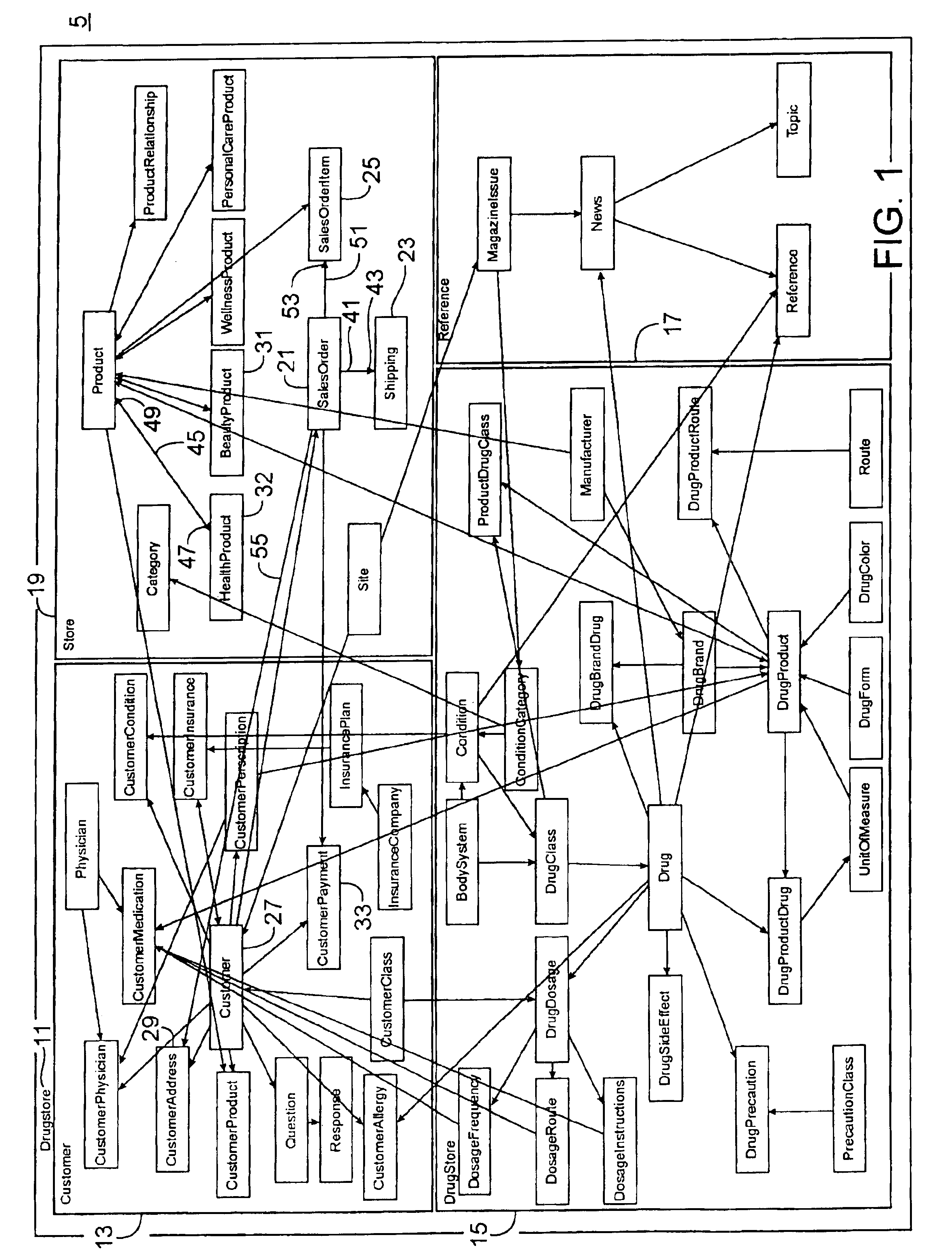Object oriented based methodology for modeling business functionality for enabling implementation in a web based environment
a business functionality and object oriented technology, applied in the field of object oriented based methodology for modeling business functionality, can solve the problems of object's state to its methods being a drawback, server does not automatically know, and cannot specify a different rule for computing discount prices
- Summary
- Abstract
- Description
- Claims
- Application Information
AI Technical Summary
Benefits of technology
Problems solved by technology
Method used
Image
Examples
Embodiment Construction
[0054]When executing software on a computer, a Business Object is a data object, for which storage space on an electronic medium has been allocated, derived from a Business Class template. By template, it is meant that a Business Class defines the generic definition of a Business Object. A data object is an entity stored in an electronic format that is comprised of information. A Business Object is, therefore, a dynamically allocated instance of the static Business Class. A Business Class is comprised of attributes, methods, external messages and web documents. Detailed examples of attributes, methods, external messages and web documents are provided below. The Business Processes, comprising in part the Business Class, are themselves comprised of Business Rules, methods, and subprocesses. Business Rules and Business Processes are defined more specifically below. An advantage of the present invention is the ability to model all business activities as interactions between Business Cla...
PUM
 Login to View More
Login to View More Abstract
Description
Claims
Application Information
 Login to View More
Login to View More - R&D
- Intellectual Property
- Life Sciences
- Materials
- Tech Scout
- Unparalleled Data Quality
- Higher Quality Content
- 60% Fewer Hallucinations
Browse by: Latest US Patents, China's latest patents, Technical Efficacy Thesaurus, Application Domain, Technology Topic, Popular Technical Reports.
© 2025 PatSnap. All rights reserved.Legal|Privacy policy|Modern Slavery Act Transparency Statement|Sitemap|About US| Contact US: help@patsnap.com



